Brazilian felines
We know several species of domestic cats and some wild cats, especially the ones we see on the Internet or in documentaries, such as lynxes, lions, leopards, and tigers. But South America also has a great variety that you need to know about! We have all heard of the two largest cats in the country - the jaguar and the puma (also known as mountain lion or cougar). Today we are going to look at some others that live in different areas of the country.
Leopardus
In South and Central America, eight species of wild cats of the genus Leopardus are officially recognized, and five are found in Brazil. The group, however, still needs further study, as some taxonomists suggest that there may be as many as thirteen species.
The cats in this genus received the name Leopardus as a reference to most having leopard-like spots. Leopards and jaguars, however, belong to the genus Phantera and are genetically very distant from the cats of the genus Leopardus.
Their similar coloration is due to convergent evolution. An evolutionary process in which animals that are not closely related show similar physical and behavioral characteristics because they live in similar environmental conditions.
Several very similar species are called “bush cats”, and very little is known about them. However, it is clear that most are endangered by habitat loss, road kill, dog-borne diseases, and retaliation by farmers who kill them to avoid attacking their chickens.
1. Geoffroy’s cat (L. geoffroyi)
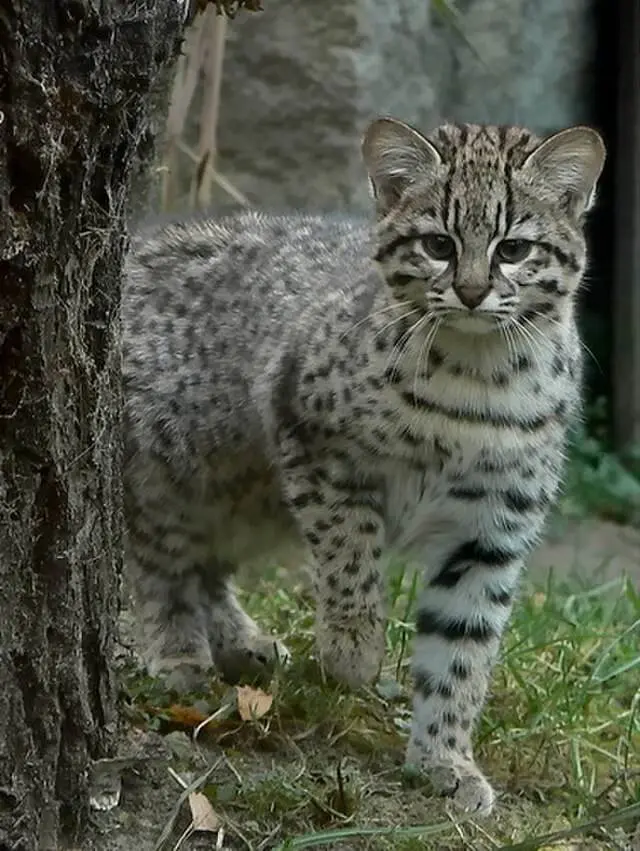
It is mainly found in the grasslands of Argentina, Bolivia, Paraguay and Uruguay. In Brazil, however, it is found only in the pampas of Rio Grande do Sul. They are usually slightly larger than a domestic cat, about 78 to 95 cm long and weighing up to 6 kg. A very interesting behavior observed in these cats is that they have been seen standing on their hind legs to look at the area around them, using their tails for support, like a kangaroo.
They are at the top of the food chain in their environment, feeding mainly on rabbits, rodents, small lizards and occasionally on fish and frogs. Males have home ranges of up to 12 kilometers. 1
Like many other animals, big cats vary in size and coloration depending on where they live: those living near the equator are smaller and have warmer tones. Those found further south on the continent tend to be larger and have grayer colors.
It is generally considered to be “least concern” for extinction, but in the Pampas it is considered vulnerable because it is often run over by cars and persecuted by farmers for hunting birds.2
2. Southern tigrina (L. guttulus)
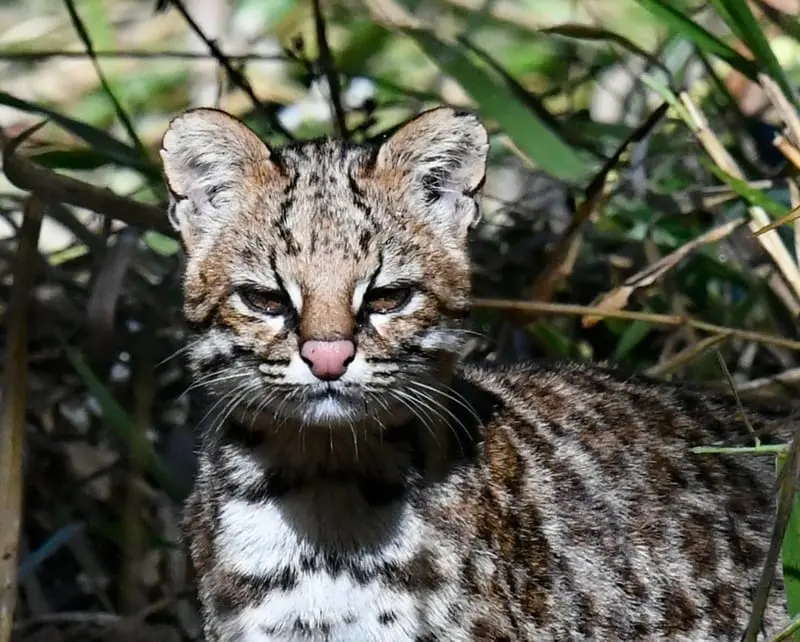
The Southern tigrina was considered until 2013 as a subspecies of L. tigrinus, however, after analyzing differences in coat tone, tails, ears, and spot size, it was now considered another species.3
Also known as the Southern Tiger Cat. It can be found in forests and fields in the Midwest, Southeast, and South of the country. They weigh 4 to 7 pounds (1.5 to 3 kg) and measure just over 31 inches (80 cm) to the tip of the tail. Like most small cats, they feed on small birds, rodents, and reptiles.
The Southern Tigrina suffers from habitat loss and fragmentation, retributive hunting, diseases carried by domestic dogs, and roadkill. Another threat to the species is hybridization with the bobcat, as the kittens are born sterile and unable to reproduce.
Between 2005 and 2014, their density declined by 50%. It is estimated that if this decline continues, their numbers will decrease by about 10% in the next ten years. The last assessment of the lynx by the International Union for Conservation of Nature (IUCN) was in 2014. At that time, there were an estimated 6,000 individuals.4
3. Oncilla (L. tigrinus)
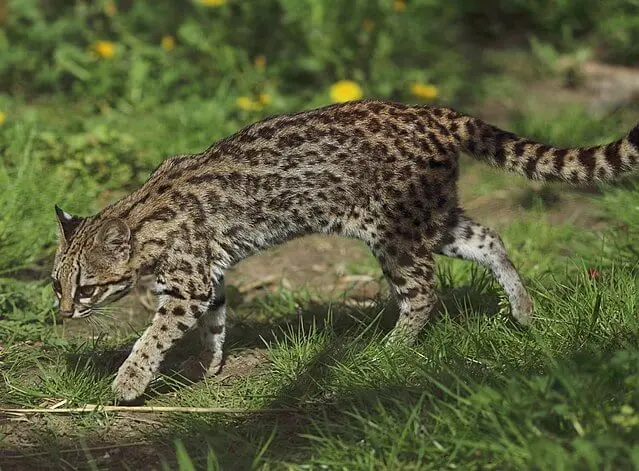
It is often confused with the southern tigrina, and until 2013 they were considered the same species. It is the smallest cat in Brazil, the same size as a domestic cat, with a length of 77 cm (30 inches) and an average weight of 2.5 kg (5.5 lb). Most of its length is due to its long tail, which is 60% of its body length.
It inhabits the Cerrado, the Caatinga and rarely the Amazon forest. Its diet consists mainly of small birds and lizards.
In 2018, it was classified as “endangered” by the Red Book of Brazilian Fauna Threatened with Extinction. It is estimated that at least 10% of its population will decline in the next 11 years, mainly due to habitat loss and fragmentation caused by agricultural expansion.
4. Ocelot (L. pardalis)
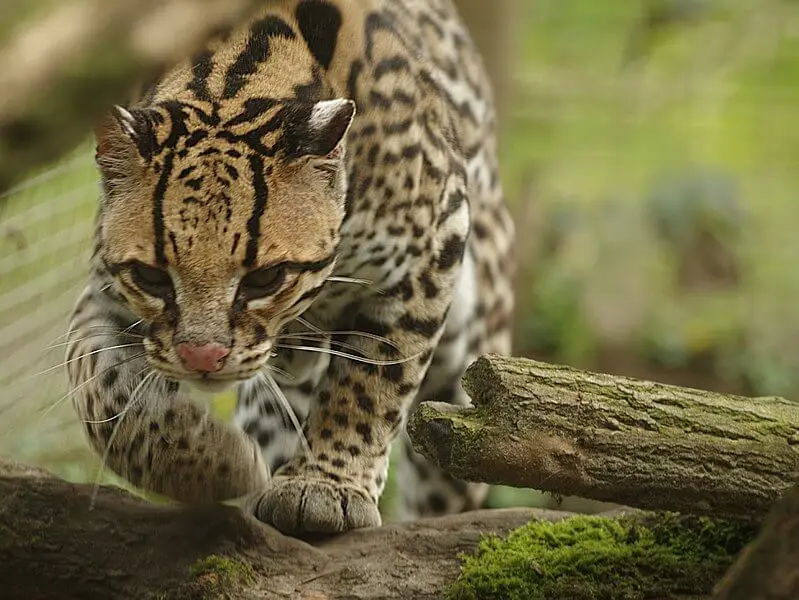
It feeds primarily on medium-sized rodents such as pacas and agoutis, but because it has a generalist diet, it can occasionally feed on ungulates, birds, fish, reptiles, and even primates such as howler monkeys.5
It is the most common cat in South America. It is found from Central America to northern Argentina, with the exception of Chile. In Brazil, it is absent only in the pampas.
Ocelots tolerate some degradation, but habitat fragmentation also causes a reduction in prey. Although it has long been considered “vulnerable”, it is now listed as “least concern” by the UICN. This change in its threat level is based on its wide geographic distribution and the fact that it inhabits areas that are difficult to access, such as the Amazon, where it is estimated to have the largest population of the species.
However, in many states outside the Amazon rainforest the subspecies L. p. mitis' classification level ranges from “vulnerable” to “critically endangered”.
5. Margay (L. wiedii)
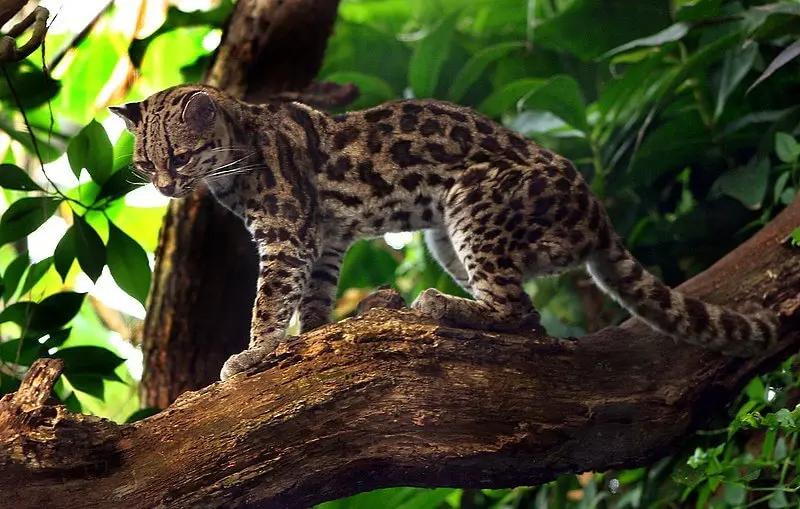
It is a cat very characteristic for its large, bulging and well outlined eyes that help it see even better at night. Although smaller than the ocelot, it has larger claws and a tail that is 70% of its body length. It inhabits almost all of Brazil in forested regions, although it is rarely seen, especially where ocelots are present. However, it is more common in the Amazon and in the Atlantic Forest of the South and Southeast.
It is a great climber and one of the few cats that can turn its ankles 180 degrees and descend from trees upside down. A very interesting fact about the Margay is that it has been observed imitating marmosets and birds to attract them.
It is currently listed as critically endangered and it is estimated that its population will decline by 10% in the next 11 years, mainly due to habitat loss as a result of agricultural expansion. Other risk factors include disease transmission from domestic animals, retaliatory hunting, and road kills.3
6. Pantanal cat ( L. braccatus)
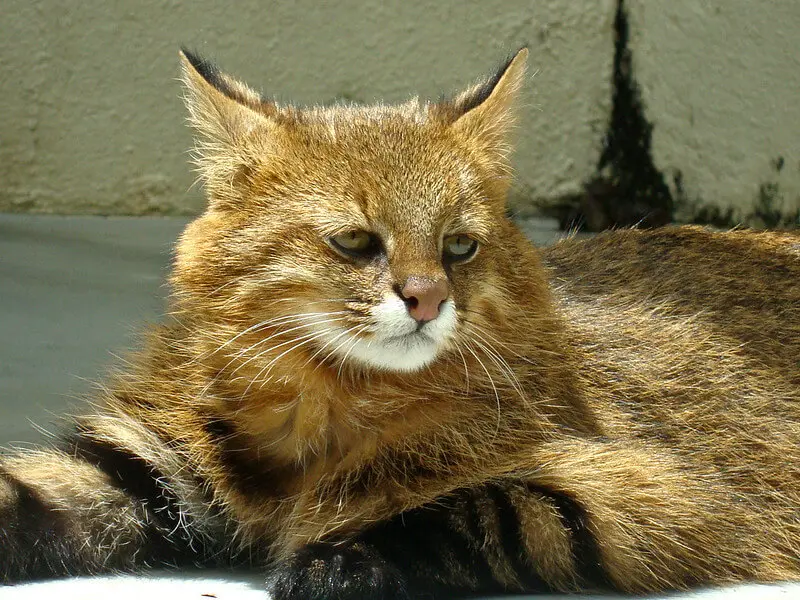
In a 2021 study, it was suggested that there are five subspecies of L. colocola, which should be elevated to species, one of which is L. braccatus.6 However, this reclassification is not yet accepted by many taxonomists and further analysis is needed.
Unlike the other cats, it has a brown coat with less visible patches. Its paws and the tip of its tail are black. It feeds on small mammals, birds, lizards, snakes and insects. It lives in the Cerrado and can be found in fields up to the edge of cultivated areas.
7. Pampas cat (L. munoai)
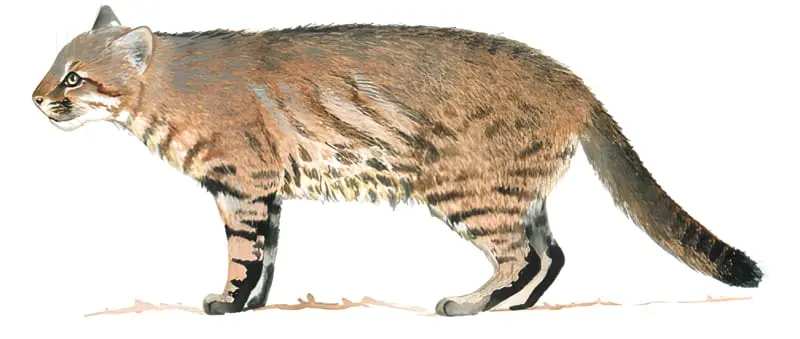
Like the Pantanal cat, it is part of the recently proposed new species. It’s and thus one of the most unknown felines in Brazil. There is very little data on these cats, and in many of them, it is classified as L. colocola.
Although sightings are rare, they can be found in the Pampas. Their coat is brown, semi-long and usually rougher than that of other cats, with diagonal stripes on the sides of the body and on the paws, only the soles of the paws are black - the main feature that distinguishes it from the Pantanal Cat.7
8. Jaguarundi (Herpailurus yagouaroundi)
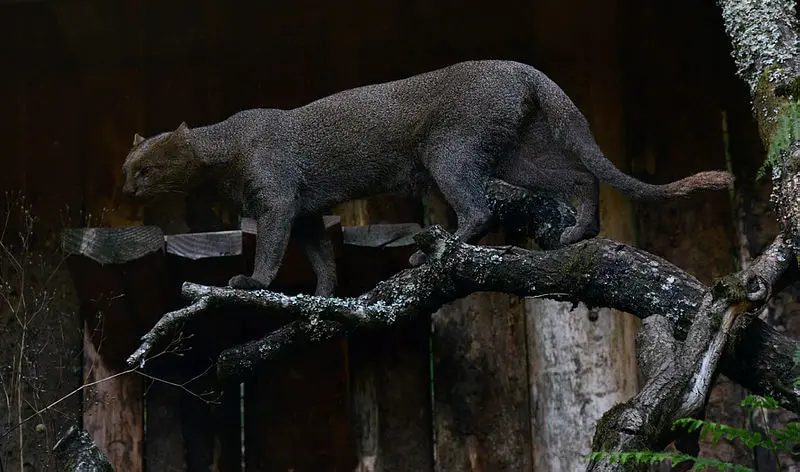
Its name means dark jaguar. It is the third largest cat in Brazil, after the jaguar and the puma. Its body length ranges from 21 to 30 inches (53 to 77 cm), and its strong, muscular tail is 12 to 20 inches (31 to 52 cm) long. Its legs are short, its ears and head are small, and its body is long and slender. Its color ranges from gray to reddish-brown. The lighter ones usually live in drier areas and the darker ones live in forests.
Some curiosities about jaguarundis are that they can vocalize several sounds such as whistles or bird calls. Studies also show that they are more closely related to cheetahs than any other South American cat.
Jaguarundis are found throughout Brazil, except in the Pampas. They are listed as “least concern” by the IUCN, but populations have declined in many regions due to habitat loss and fragmentation, and retaliation by ranchers for killing birds.
Read more:
ICMBio — CENAP — Carnívoros brasileiros
